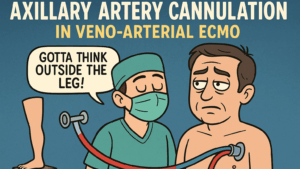Acute Type A aortic dissection (AAAD) is a life-threatening cardiovascular emergency requiring immediate surgical intervention. Despite its critical nature, there remains no universal consensus on the optimal surgical approach. This retrospective cohort study, conducted at Geneva University Hospitals, evaluates the impact of a standardized surgical protocol introduced in 2016 for managing AAAD, aiming to transform a previously surgeon-dependent technique into a more consistent, patient-focused model.
The study included 104 patients who underwent emergency surgery for AAAD between 2010 and 2021. Patients were divided into two cohorts: Group 1 (pre-2016) received surgery under varying operator-dependent techniques, while Group 2 (post-2016) was treated using a standardized institutional protocol.
Key Demographics and Clinical Features
The average patient age was 66.5 years, and males represented 55.8% of the cohort. Demographics and comorbid conditions were comparable across both groups. Chest pain was the most common symptom, often described as intense and sudden. A significant proportion of patients (32.7%) exhibited neurological symptoms, and nearly 14% presented with shock or cardiorespiratory arrest. Computed tomography (CT) scans were the primary diagnostic tool, used in 93.3% of cases, supplemented by transthoracic echocardiography and chest radiographs.
Protocol-Driven Surgical Differences
The introduction of the standardized protocol in 2016 led to significant procedural changes:
- Cannulation Sites: Group 2 primarily used subclavian or axillary arterial cannulation and central venous cannulation, significantly reducing reliance on femoral access.
- Surgical Techniques: Ascending aorta plus hemiarch replacements were predominant in Group 2, compared to mainly ascending aorta replacements in Group 1. Additionally, Group 2 saw an increased use of the Bentall procedure.
- Cerebral Protection and Hypothermia: Group 2 implemented more frequent use of antegrade cerebral perfusion and hypothermic circulatory arrest, enhancing brain protection during surgery.
Despite longer surgery, cardiopulmonary bypass, and aortic cross-clamping times in Group 2, the trade-off led to improved aortic repair quality and patient-specific procedural precision.
Postoperative and Long-Term Outcomes
The postoperative complication rates—including renal failure, respiratory issues, and stroke—were similar between groups. However, Group 2 exhibited significantly fewer late reoperations (2.2% vs. 24.1%) and lower rates of aortic dilatation (2.2% vs. 19.0%). These outcomes highlight the protocol’s effectiveness in preventing future aortic pathology.
While short- and long-term mortality rates did not differ significantly between the two groups, survival trends suggested better outcomes in the standardized protocol group over time. The 30-day mortality stood at 21.2%, marginally below international benchmarks reported by the International Registry of Acute Aortic Dissection (IRAD).
Scientific and Clinical Significance
This study reinforces the value of adopting standardized surgical protocols, particularly in smaller-volume centers. By minimizing operator variability and implementing best practices consistently, the protocol helped shift AAAD surgery toward a more patient-centered approach. Enhanced cerebral protection strategies, structured surgical planning, and comprehensive preoperative imaging contributed to more durable surgical repairs and reduced reoperation rates.
The study underscores the importance of strategic arterial and venous cannulation, extensive but justified aortic reconstruction, and optimal use of brain protection techniques like antegrade cerebral perfusion. These elements are crucial for improving long-term outcomes without significantly increasing mortality.
Limitations and Future Directions
Being a retrospective, single-center study, findings are constrained by potential documentation inconsistencies and unequal follow-up durations. The study calls for further multicenter prospective trials to validate the benefits of standardized protocols across various healthcare settings and surgical volumes.
In conclusion, the standardized protocol has proven to be a valuable tool in AAAD management, transforming surgical care from an artisanal to an evidence-based practice. Even in lower-volume centers, structured approaches can lead to improved patient outcomes, particularly in reducing reinterventions and ensuring procedural consistency.







